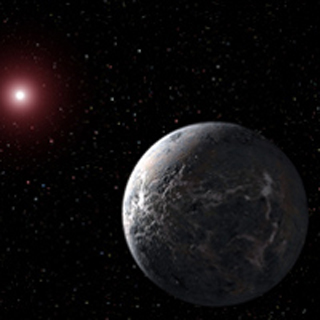Course Description
This course covers the basic principles of planet atmospheres and interiors applied to the study of extrasolar planets (exoplanets). We focus on fundamental physical processes related to observable exoplanet properties. We also provide a quantitative overview of detection techniques and an introduction to the …
This course covers the basic principles of planet atmospheres and interiors applied to the study of extrasolar planets (exoplanets). We focus on fundamental physical processes related to observable exoplanet properties. We also provide a quantitative overview of detection techniques and an introduction to the feasibility of the search for Earth-like planets, biosignatures and habitable conditions on exoplanets.
Course Info
Instructor
Departments
Learning Resource Types
assignment
Problem Sets
notes
Lecture Notes

Artist’s conception of the 5 Earth mass exoplanet Gliese 581 c. Gliese 581 c is one of the lowest-mass exoplanets known. This planet orbits a red dwarf star, just inside the star’s habitable zone. The star and planet are 20.5 light years from Earth. (Image courtesy of NASA/JPL-Caltech.)








